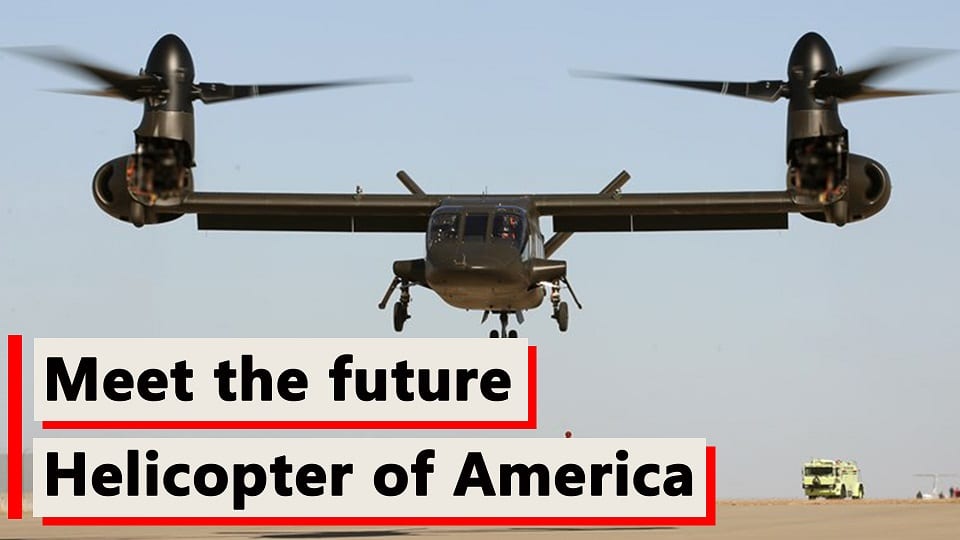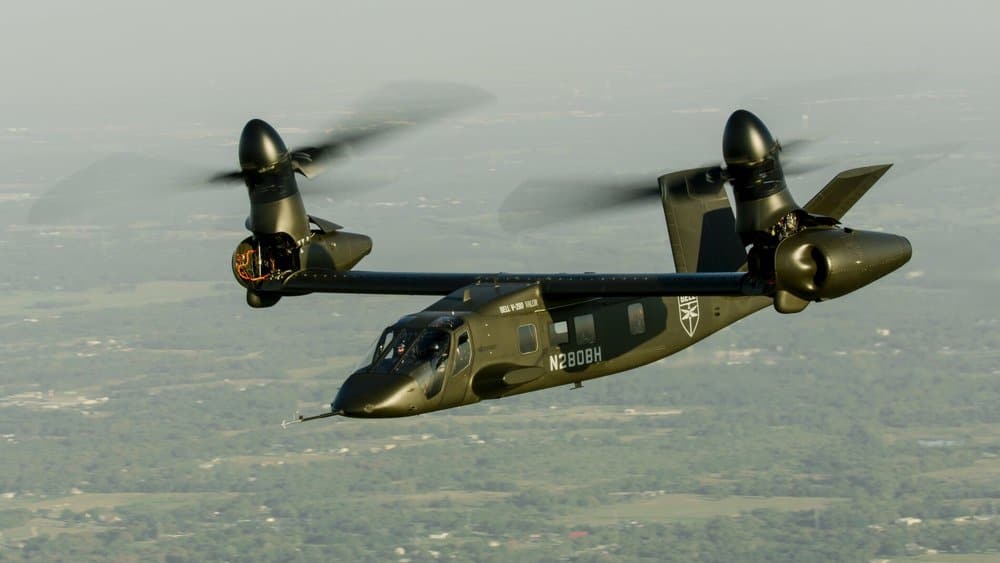Aviation
Meet the future helicopter V280 that will replace the Black Hawk in America.

In this article, we’ll talk about some of the New helicopter’s qualities that the American Army has chosen as its replacement for the Black Hawk helicopter.
No 1, It will replace the Black Hawk helicopter.
For the long-range helicopter for the United States Army, the bell V280 has been shortlisted. as confirmation of it comes.
For the Future Vertical Lift (FVL) program of the United States Army, Bell and Lockheed Martin are creating the Bell V-280 Valor, a tiltrotor aircraft.
The Black Hawk helicopter will be replaced by this one. Since 1979, almost 4000 helicopters have been constructed and are now being used in the United States. The S70 is the latest modified variant of this helicopter.
This helicopter serves a variety of purposes for US defense, and it has also seen action in numerous conflicts. The Black Hawk will be replaced by the New V280 in the upcoming years.
2. The top speed is 280 hence the name is V-280.
The Joint Multi-Role Technology Demonstrator Phase was launched for the program in 2013, and the US Army was chosen for it. The helicopter was developed in conjunction with Lockheed Martin, and it has consistently demonstrated scientifically sound programmatic and goal-oriented performance.
The V-280 is built for a top speed of 300 knots, or 556 km/h, a cruising speed of 280 knots, or roughly 520 km/h, a range of 2,100 nautical miles, and a combat range of 500 to 800 nmi. Maximum takeoff weight is anticipated to be around 30,000 pounds or 14,000 kg.
3. It has significant improvement over the older V-22 Osprey tiltrotor
The engines are kept in position while the rotors and drive shafts tilt, which is a significant improvement over the older V-22 Osprey tiltrotor. In the case of an engine failure, both prop rotors can be driven by a single engine thanks to a driveshaft that passes through the straight wing. Retractable landing gear, a triple-redundant fly-by-wire control system, and a V-tail design will all be features of the V-280.
The V-280 will feature a four-person crew and be able to carry up to 14 soldiers. With two cargo hooks, it can raise 10,000 lb or 4,500 kg. M777A2 howitzer while traveling at a speed of 150 knots which is 280 km/h or more. The UH-60 Black Hawk medium-lift helicopter’s fuselage is aesthetically similar.
4. It can be an attack helicopter.
Bell and Lockheed claim that an AV-280 version may launch rockets, missiles, and even miniature unmanned aerial vehicles front or aft without rotor interference, even in forward flight and cruise modes with the rotors facing forward. It will be a modern helicopter that is equally recognizable as the Chinook.
5. Difference between the Bell V-280 vs Black Hawk UH 60
- Each helicopter needed a crew of four to operate.
- The Bell can accommodate 14 soldiers, while the Blackhawk can accommodate 11 soldiers or 6 stretchers.
- Bell is 50.5 feet long, while the black hawk is 64 feet.
- The bell weighs 8200 kg when empty, while the Blackhawk weighs 5675 kg.
- Blackhawk has a General Electric turboshaft engine, whereas Bell is powered by two Rolls-Royce turboshaft engines.
- Bell has a maximum speed of 320 mph (520 km/h), a combat range of 1,480 km, and an operating range of up to 3,900 km. Its service ceiling can reach 6,000 feet.
- Black Hawk’s maximum cruise speed is 294 km/h, its maximum combat range is 590 km, and its maximum ferry range is approximately 2221 km. Up to 19000 feet of service ceilings are provided.

Aviation
COMAC Unveils Plans for the C929 to Rival Airbus and Boeing

After the success of China’s first C919 aircraft, the country is setting its sights on developing a larger plane. COMAC (Commercial Aircraft Corporation of China) has officially confirmed plans to build a widebody aircraft, marking a significant step in its aircraft lineup.
Traditionally, Airbus and Boeing dominate the widebody aircraft market, with decades of expertise in developing planes and engines capable of carrying heavy payloads. China, which currently relies on imported engines, is now aiming to challenge these giants with its own widebody jet, the C929, designed to compete with the Airbus A350 and Boeing 777.
American Airlines Is Looking for Flight Attendants: Apply Now
The C929 will be China’s first independently developed long-range widebody aircraft. It adheres to international airworthiness standards and boasts independent intellectual property rights. The baseline version is designed to seat 280 passengers and offers a range of 12,000 kilometers, catering to global demand for both regional and international air travel.
Russia, which also needs reliable narrowbody and widebody aircraft, could become a key customer for the C929. Additionally, China plans to target the broader Asian market as it continues to expand its aviation capabilities.
Close Call at Heathrow: BA Flight Narrowly Escapes Drone Collision
China’s aviation progress includes the ARJ21 (now called C909), a regional jet with 100 seats for shorter routes, and the C919, a narrowbody jet with 180 seats designed to rival the Boeing 737 MAX and Airbus A320. Both models have found increasing demand in the domestic market.
At China’s largest air show in Zhuhai, COMAC announced that Air China will be the launch customer for the C929 widebody jet, though details about order size and delivery timelines were not disclosed.
Other major deals announced by COMAC include:
- Hainan Airlines: Firm orders for 60 C919 and 40 C909 regional jets.
- Colorful Guizhou Airlines: 30 C909 jets, with 20 firm orders and 10 provisional agreements.
The C929, renamed from the CR929 after Russia withdrew from the joint development project in 2023, is expected to carry 280–400 passengers with a range of 12,000 kilometers, competing directly with Boeing’s 787 Dreamliner.
According to COMAC’s deputy general manager, Tong Yu, the first fuselage section of the C929 is expected by September 2027, with prototype test flights anticipated soon after.
-

 Aviation2 months ago
Aviation2 months agoMicrosoft Flight Simulator Raises $3 Million to Bring Back the An-225 Mriya
-

 Airlines2 months ago
Airlines2 months agoQantas Engineers Stage Walkout Over Cost of Living Concerns
-

 Airlines2 months ago
Airlines2 months agoQatar Citizens Can Travel to the United States Without a Visa
-

 Aviation2 months ago
Aviation2 months agoQatar Airways bans these new Electronic Devices on plane
-

 Airlines2 months ago
Airlines2 months agoJapan Airlines Rolls Out Free Domestic Flights to International Passengers
-

 Defence2 months ago
Defence2 months agoWhich Country Has the Largest Fleet of Fighter Aircraft?
-

 Airport2 months ago
Airport2 months agoWestern Sydney Airport Welcomes Its First Plane After 6 Years of construction
-

 Travel2 months ago
Travel2 months agoQatar Airways Launches Four Additional Flights from Amsterdam











